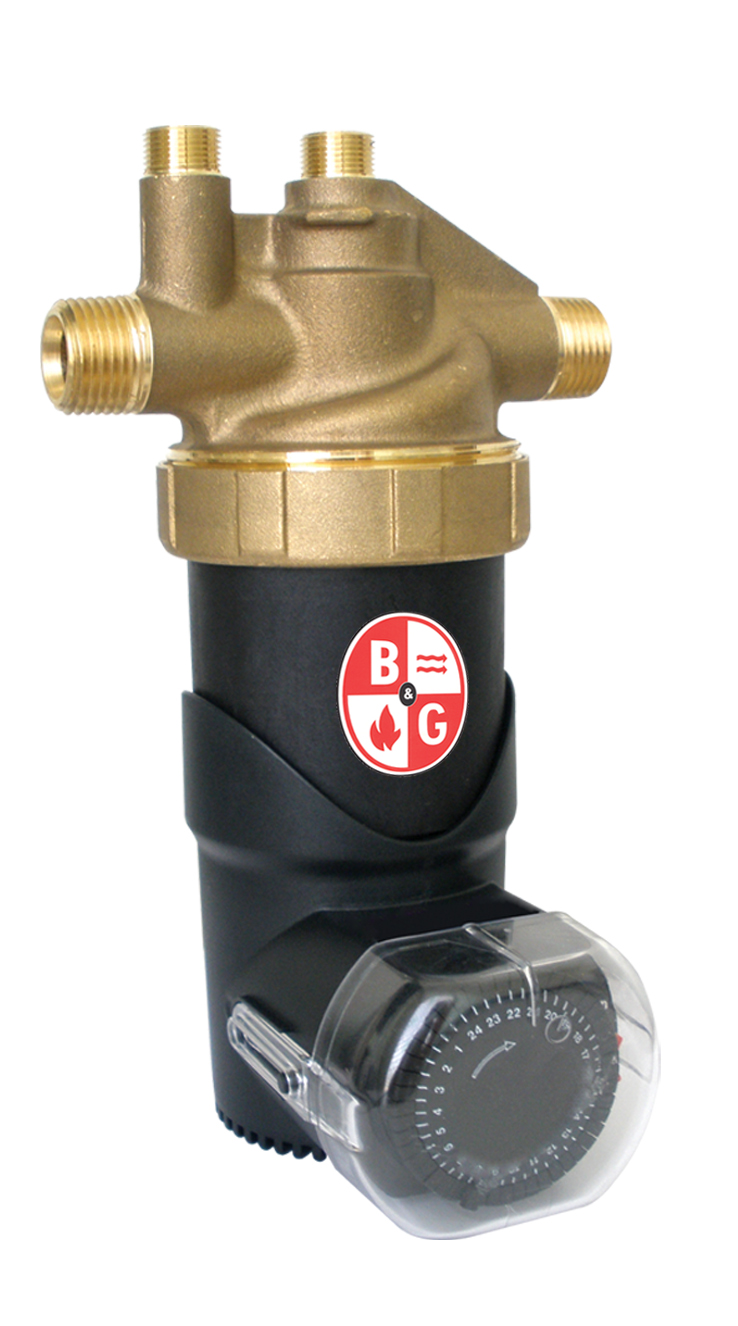Domestic Hot Water Recirculation Part 3: The Role of the Recirculation Pump
/By Chad Edmondson
Whether you are thinking of installing a recirculation pump in a 3-bedroom home or designing a recirculation system for a 20-story office building, the role of the recirculation pump is always the same. Clearly, the pump is moving the water in order to keep hot water at or near the tap—but that’s really a simplified explanation of the pump’s role.
Technically, the role of the recirculating pump is to overcome the heat loss in the supply pipe – that length of pipe that stretches from the water heater outlet all the way to the farthest fixture. In most designs we are only willing to tolerate a heat loss of 10 to 20°F degrees between these two points. Whatever temperature difference your design calls for is your design ∆T. The ∆T must be known in order to complete the heat loss calculation that is required to size your pump.
Minimal Heat Loss = Small Pump
We’ll discuss recirculation pump sizing in greater detail in an upcoming blog. For now, it’s important to understand that the pump size is determined by the supply pipe heat loss in a no draw situation, so that first thing in the morning when someone washes their hands at the top floor of their building, the water will be no more that 10 or 20°F (depending on the design ∆T) cooler than the water heater supply temperature.
How much heat loss typically occurs in a hot water system? Obviously that depends on the length of pipe, and the more pipe the greater the heat loss. However, that pipe is often quite small in diameter and will be insulated, so the heat loss is actually quite small. Thus, recirculation pumps are typically quite small. Table 1 shows the relationship between temperature drop (∆T) and BTU/Flow.
Table 1
Table 2 shows the relationship between heat loss and lengths of various types of piping. Insulation copper pipe is the most relevant to this discussion.
Table 2
Keep in mind that length of the return recirculation piping is not included in the heat loss calculation and does not impact the pump flow rate. We are really on concerned with getting sufficiently hot water to the most distant fixture and the return line is a one-way trip back to the water heater anyway.
Instantaneous Heaters Require Higher Recirculation Flow Rates
The type of water heater (tank-type or instantaneous) will impact your pump selection. Instantaneous heaters can require a higher recirculation flow rate in order to maintain stable temperatures, therefore your pump selection will be based on a minimum flow through the instantaneous heater rather than the heat loss in the supply pipe. If you are using steam as the energy source than the instantaneous heater recirculation flow rate should be increased to about 25% of the design flow rate to provide stable temperature control during periods of light load.
Stay tuned for more in-depth discussions on designing domestic hot water recirculation systems. In the meantime, check out our previous blogs on this topic as well as our video:
Domestic Hot Water Recirculation Part 1: What’s The Point?
Domestic Hot Water Recirculation Part 2: Where ASHRAE 90.1 Conflicts with OSHA





